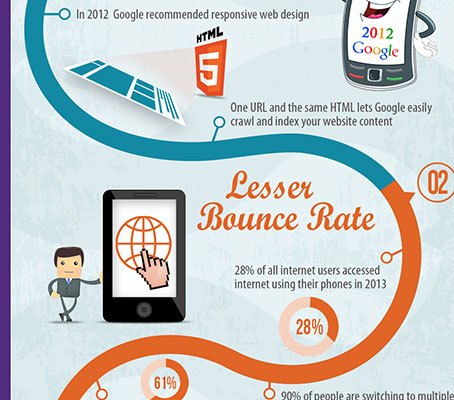The Development Of Website Style: From Earlier Times To Currently
The Development Of Website Style: From Earlier Times To Currently
Blog Article
Article By-Hartley Peters
In the past, web sites were easy and focused on information. Navigating was direct, and style was for desktops. Currently, user experience is crucial. Information guides styles for simple navigation. Responsive formats suit various devices. Today, dark setting decreases strain, and minimal menus boost navigating. Interactive features engage customers, and vibrant visuals stick out. AI integration boosts engagement. See just how style has actually evolved to boost your on the internet trip.
Early Days of Web Design
In the very early days of website design, simplicity reigned supreme. Websites were fundamental, with minimal colors, typefaces, and formats. The focus got on providing details rather than showy visuals. Customers accessed the internet with slow-moving dial-up connections, so rate and functionality were vital.
Navigation menus were straightforward, generally situated at the top or side of the web page. Web sites were designed for computer, as mobile surfing had not been yet prevalent. Content was king, and developers prioritized easy readability over complicated layout components.
HTML was the primary coding language used, and designers had to function within its restraints. Computer animations and interactive functions were marginal compared to today's standards. https://www.google.com/maps/place/Moon+and+Owl+Marketing/@32.9757271,-106.5344695,1840583m/data=!3m1!1e3!4m6!3m5!1s0x864ddeaa4179705b:0x488d41d2cc6b9750!8m2!3d32.9757271!4d-97.5696258!16s%2Fg%2F11b6mpccrg?entry=ttu&g_ep=EgoyMDI1MDIxMS4wIKXMDSoJLDEwMjExNDUzSAFQAw%3D%3D were fixed, with little vibrant content or personalized individual experiences.
Rise of User-Focused Layout
With the evolution of site design, a change in the direction of user-focused style concepts has come to be increasingly famous. Today, producing websites that focus on customer experience is important for engaging visitors and accomplishing company goals. User-focused design includes recognizing the needs, preferences, and habits of your target market to customize the web site's format, web content, and features as necessary.
Designers now carry out complete research study, such as individual studies and usability testing, to collect insights and feedback directly from users. This data-driven method assists in developing user-friendly navigating, clear calls-to-action, and aesthetically attractive interfaces that reverberate with visitors. By putting the user at the facility of the design process, websites can provide an extra personalized and pleasurable experience.
Receptive design has actually additionally emerged as a crucial aspect of user-focused style, making certain that internet sites are maximized for numerous tools and screen dimensions. This flexibility boosts access and functionality, accommodating the varied methods customers connect with sites today. Basically, the surge of user-focused design represents a shift towards developing digital experiences that focus on the demands and assumptions of completion individual.
Modern Trends in Website Design
Discover the most recent fads shaping web design today. One famous fad is dark mode layout, supplying a streamlined and modern appearance while lowering eye strain in low-light environments. Another key pattern is minimalist navigation, streamlining food selections and enhancing user experience by concentrating on essential elements. Including micro-interactions, such as animated switches or scrolling impacts, can create a more interesting and interactive website. Receptive design stays critical, guaranteeing seamless customer experiences across different devices. Furthermore, utilizing bold typography and unbalanced formats can include visual rate of interest and accentuate certain web content.
Integrating AI innovation, like chatbots for customer support or individualized suggestions, boosts individual engagement and simplifies procedures. Accessibility has additionally end up being a significant trend, with developers prioritizing comprehensive style techniques to cater to diverse user demands. Accepting sustainability by optimizing site efficiency for rate and efficiency is one more emerging pattern in website design. Collaborating with individual feedback and information analytics to iterate and improve style continuously is necessary for remaining pertinent in the ever-evolving electronic landscape. By welcoming these modern-day patterns, you can create an aesthetically enticing, user-friendly internet site that reverberates with your audience.
Final thought
As you review the advancement of website design from the very early days to currently, you can see just how user-focused layout has come to be the driving pressure behind modern patterns.
Embrace the journey of change and adjustment in website design, always keeping the customer experience at the leading edge.
Stay existing with the most recent trends and innovations, and never quit developing your strategy to develop aesthetically stunning and user-friendly sites.
Progress, adjust, and develop - the future of web design remains in your hands.
